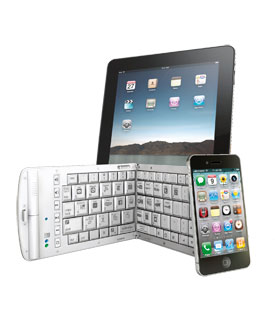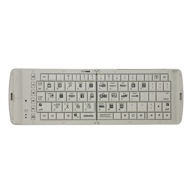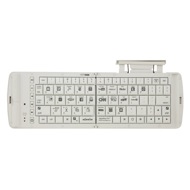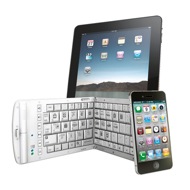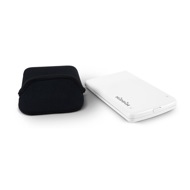Hippih
Foldable Bluetooth Keyboard
For Apple iDevices
iOS / Bluetooth
Includes Neoprene Carrying Case
Pocket Sized, Foldable
The perfect keyboard for on the go!
This Foldable Bluetooth Keyboard by Hippih is designed to be the perfect accessory for your iPad, iPhone or iPod touch. Foldable for easy portability and protection, this innovative keyboard allows you to type normally on your iPad, iPhone, or iPod touch.
Hidden iPhone stand
Along one edge of the keyboard, there's a secret slot that holds a portable iPhone / iPod touch stand.
Fully compatible with other Bluetooth enabled devices, too.
The letter keys each feature icons from popular websites intended for use with an accompanying iOS app. The AppsKey Pro app is no longer available on iTunes nor supported by Hippih, but this keyboard functions great without it. Recommended for road warriors, students, businessmen, or anyone on the move with an iPad, iPhone, or iPod touch. An easy and effective desk-top typing experience for emails, documents, notes, and anything that you need to type while you're traveling, or simply out of the office or away from home.
1-800-275-4576


